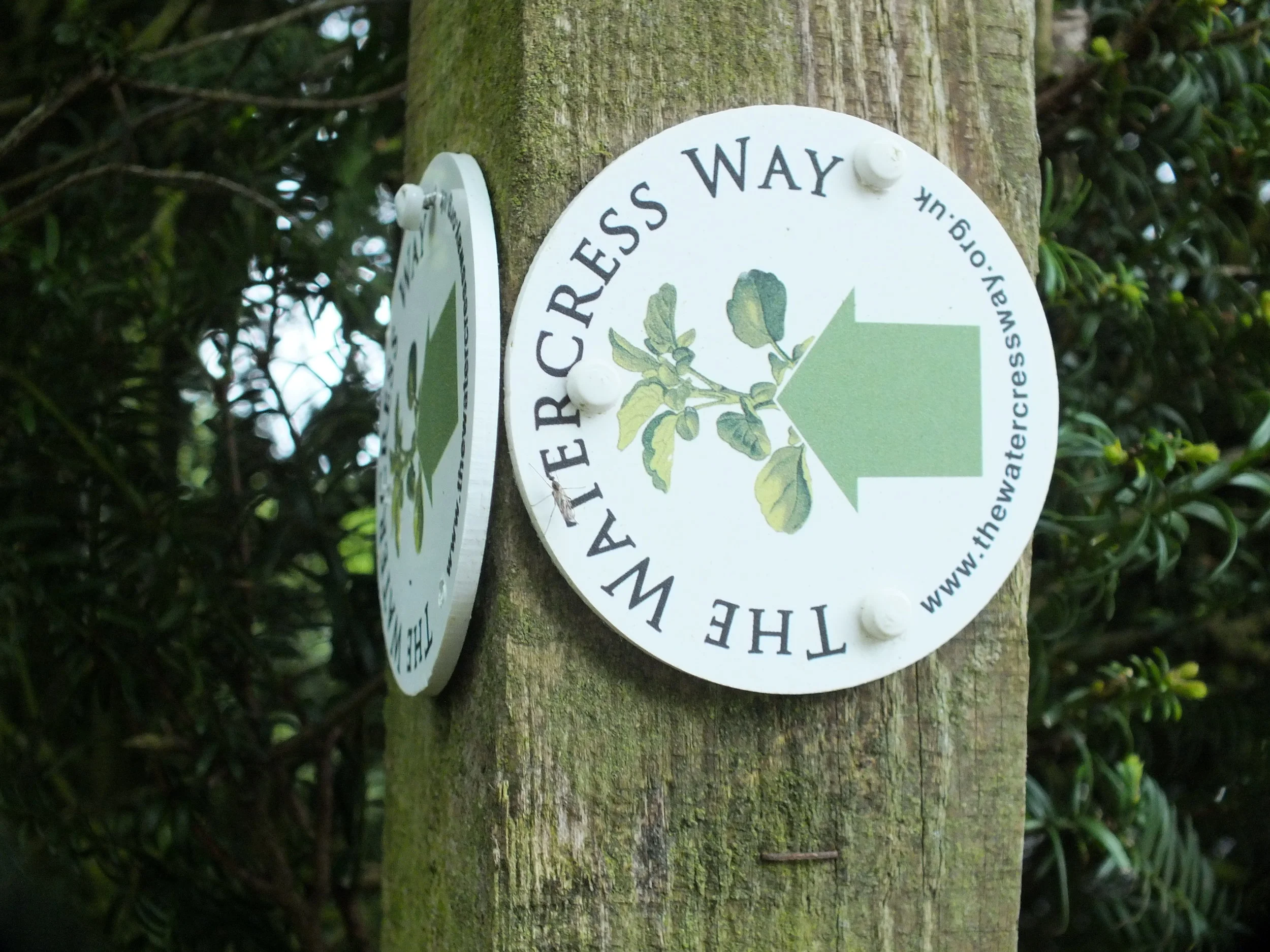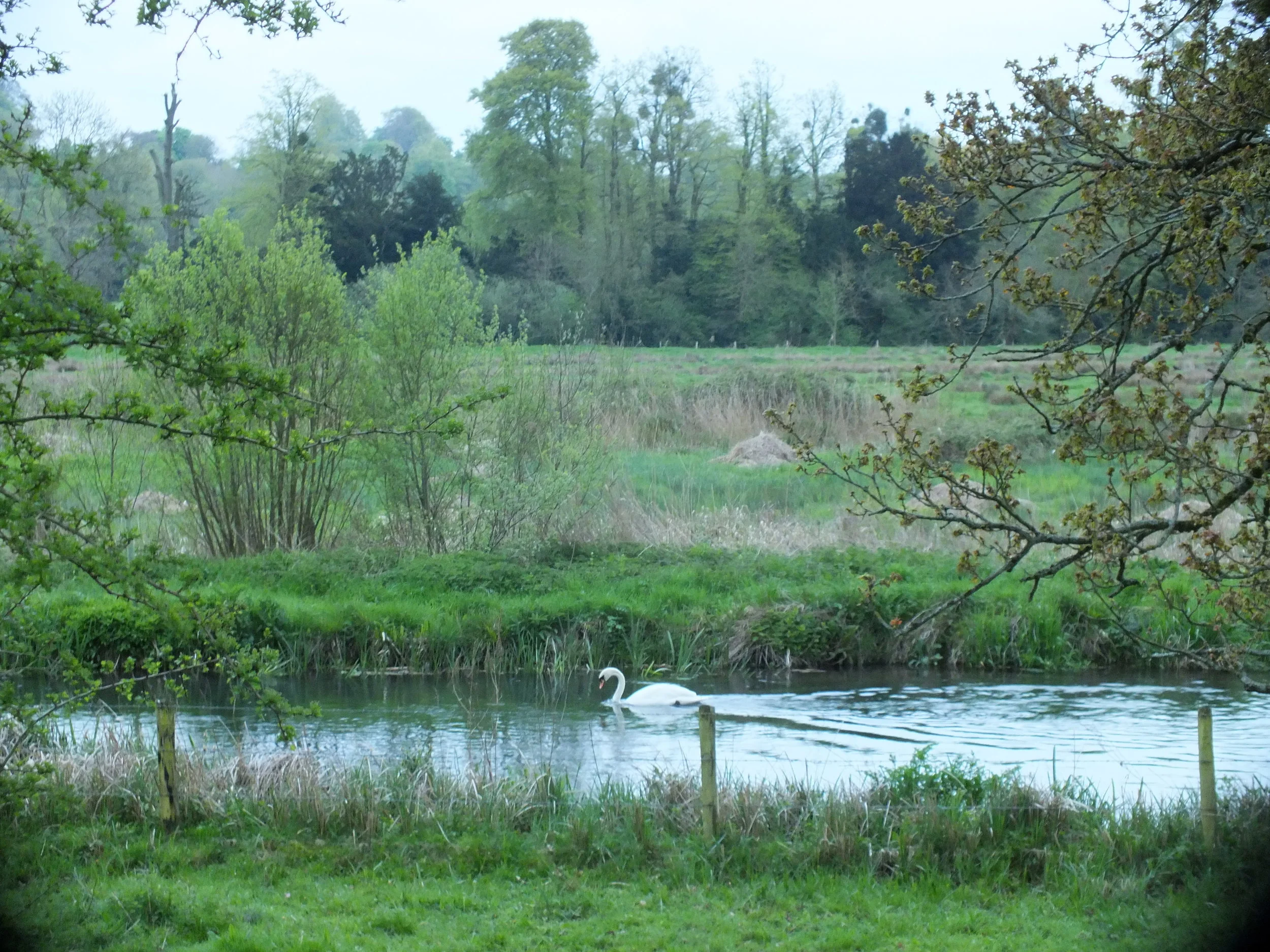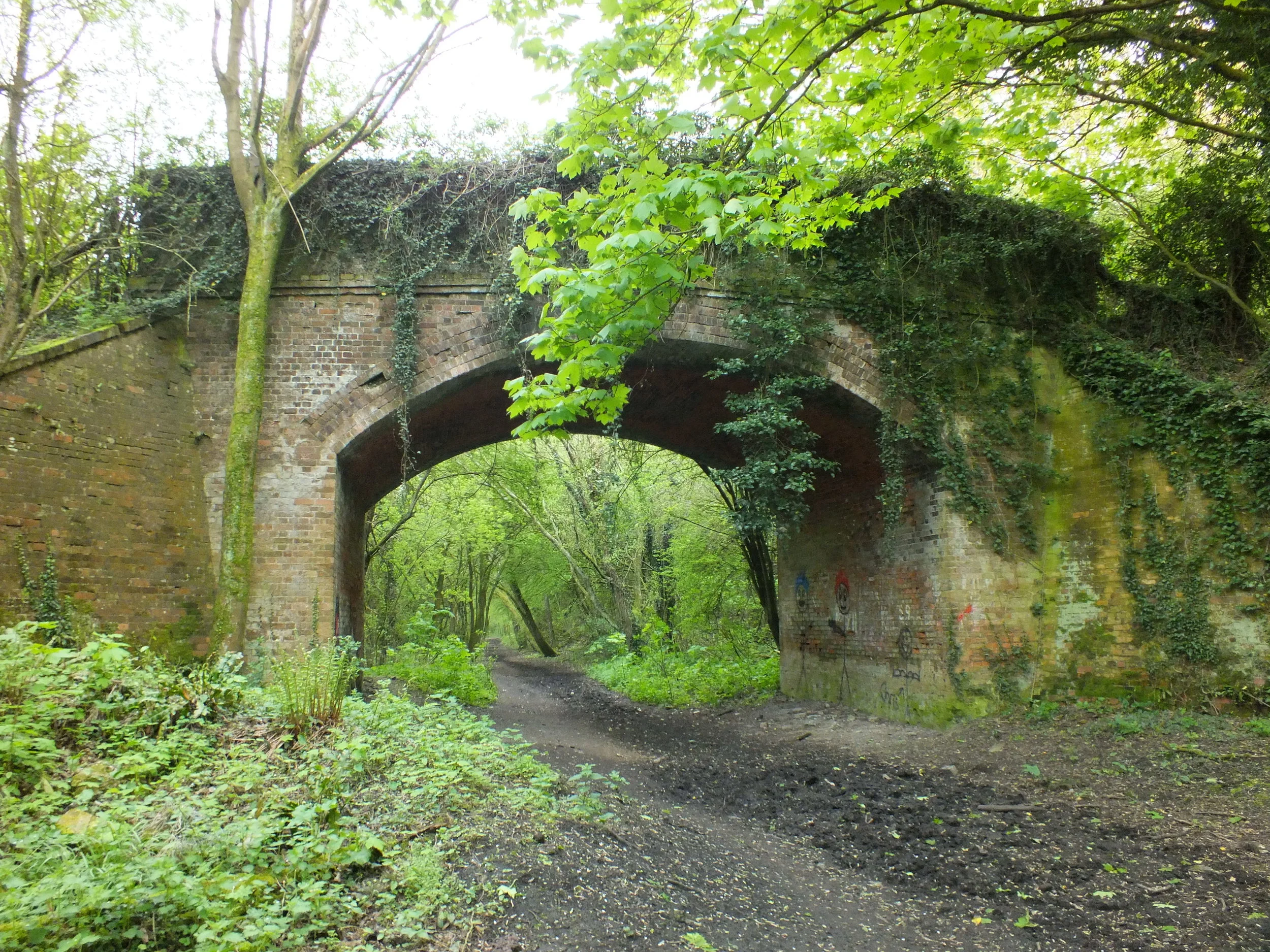The Watercress Way: a new path for old routes!
Have you ever wondered how long distance footpaths come into existence? Not just the practical tasks of waymarking or ensuring stiles are sufficiently sturdy, but in the underpinning idea and conception that precedes the drawing up of a more detailed route. Or why has a need been seen for another path in an area that is already criss-crossed with a number of other designated routes?
Like many good ideas, it seems as though the germination of The Watercress Way began over some pub drinks earlier this decade when a few enthusiasts were inspired by the idea of developing a route that links and celebrates the routes of two previously unconnected disused rail lines that pass through an area renowned for the growing of watercress. The group (which became a registered charity in June 2016) devised and subsequently pursued a strategic plan for 2015-18. This has really been a grassroots initiative, rather than part of some kind of national plan.
Watercress Way following the old railway route near Itchen Abbas (Note the old telegraph pole lying to the side)
Following 3 years of committed effort, a fully waymarked 26 mile circular route stretching between New Alresford and Sutton Scotney via Kings Worthy and back around now allows easy travel whether on foot or on bike. Some of it retraces the old rail routes, other parts follow ancient drove roads, and in places it remains a little fractured that require small detours to link it altogether. It brings together the opportunity to not only enjoy the countryside, but to consciously feel that one is linking recent history that conjures up the sense of a bygone era, whilst also appreciating the efforts to enhance the local ecology and accessibility of the area.
- One of the rail routes was the Didcot, Newbury and Southampton Railway (DN&SR) that provided a direct north-south line between the aforesaid places via the old Chesil Street station in Winchester. It therefore strategically connected the Midlands with the port of Southampton. The line opened in two stages, in 1882 and 1885 but the anticipated freight traffic and heavy passenger volumes never materialised. Its use for troop movements declined at the end of the Second World War. Eventually the line closed in stages from 1960 to 1964 during the period of Beeching’s infamous review.
- The single track line between Alton, New Alresford and Winchester Junction lasted a while longer. From 1865 the Mid-Hants Railway Company and its successor companies had run the line until British Rail announced its intention to close the line in 1967. However, a strong resistance campaign, which at one point forced a public inquiry, delayed its eventual closure until 1973. Today the stretch between Alton and New Arlesford now operates as the heritage, volunteer-run Watercress Line that includes the use of restored steam engines and ‘old’ carriages that attract many visitors to the area. The section west of New Arlesford to Winchester was torn up and in places built upon. The old station at Itchen Abbas has been incorporated into a private garden. Some clearly identifiable stretches have now become incorporated into The Watercress Way path.
Following the closure of the lines, part of the route was bought by private interests that led to the break up of the continuous track and hindered potential public access. No post-closure strategic plans had been devised. Therefore some detours around such stretches have been necessary. The new housing development at Sutton Scotney’s old station site is a case in point.
Spring flower carpet along tree lined avenue on walk near Itchen Abbas
To gain an appreciation of part of the route and the work that has been put into creating The Watercress Way, I joined about 25 others at the end of April on a very cloudy, early morning for a Dawn Chorus walk, held as part of the organisation’s Dawn to Dusk open day. Meeting at Couch Green, we wandered through a diversity of habitats, ranging from the gladed stretch of the old Railway, the meadows around Chilland, the gentle lower valley pastures on the north side of the River Itchen, a lime tree-lined drive carpeted with bluebells and forget-me-nots and past back gardens as far as Itchen Abbas.
An early morning swim on the River Itchen!
From almost pure silence, the chorus began as if on cue at 5am, when the first blackbird and robin struck up their distinctive songs. Gradually the sound and richness of the different bird songs increased to the point when it became a continuous ‘wall of sound’. The walk progressed in a walk-stop-listen manner allowing us to pause and attune our ears and distinguish between the more familiar calls and those less obvious. At the time I could pick out the various distinctions, but if I was to hear them again I would probably not recognise the species apart from those more commonly seen and heard. At one point, the different calls close to the river were identified as Cetti’s, reed and sedge warblers, not birds familiar to me. Meanwhile a swan, mallards, gadwall and moorhens were observed taking their early morning swim on the Itchen. Eventually we were greeted back at Crouch Green by a welcome hot drink and bacon roll, but the 2½ hours walk reaffirmed how much pleasure is derived from making the effort to get up early and embrace one of nature’s wonders that is free for all to enjoy. We were rewarded with the sounds of 35 different bird songs which the enthusiasts said broke the record for this now annual event.
Worthy Down Halt - wildflowers have now replaced passengers!
Later in the afternoon, my wife and I joined the organised walk at Worthy Down Halt. Here the platforms that would have served the military base of the same name are still visible and largely intact, albeit decorated by a variety of wildflowers and bushes. Today one can see the back of Worthy Down base where extensive expansion is taking place.
Walking northwards through the tunnel of trees that marks the old line, periodic vistas had been opened up by volunteers. Besides providing downland views for walkers, these spots showcased conservation techniques in action. The extra sunlight encourages a greater variety of wildflowers to colonise the cleared patches that in turn attracts a diversity of insect life. After walking nearly a mile, the path reached the ancient Ox Drove track, thought to be 5-6,000 years old and once provided a route for cattle and sheep to be driven up to London. Further to the east the Ox Drove forms part of The Watercress Way as it loops back across the downs to New Arlesford. Having emerged on this occasion into a more exposed area, the bitterness of the keen north east wind could be felt. So seeking the relative shelter of the tunnel of trees again, we retraced our steps by walking southwards towards Kings Worthy.
Bridge over the Watercress Way and old DN&SR line
Both on this walk and the earlier Dawn Chorus, I was struck by the depth of knowledge and expertise of several of the volunteers and walkers. Besides the flora and ecology, various individuals seemed to know all about rail telegraph poles and the fact they would deliberately face towards London, to sleepers, timbers and pillboxes. In fact several artefacts in the form of old poles, sleepers and signalling equipment were spotted half buried in the wayside undergrowth.
The efforts and expertise utilised by the Trustees and volunteers of The Watercress Way group deserve support and the fruits of their success to date can now be enjoyed by the wider public. Whether walking or cycling the whole route or just sections of it, it’s a great way to get out and appreciate some diverse and fascinating corners of this part of Hampshire lying north and east of Winchester.
PRACTICAL TIPS
For most, the full route is likely to be too much to walk in one day but with a little bit of planning, it can be broken down into manageable sections.
Buses travel to most of the strategic points, so it’s feasible with careful planning to take a bus to one point and walk to another, or vice versa, although it should be noted that some buses run more frequently than others.
Operated by Stagecoach:
Route 64 travels between Winchester and Alton via New Alresford. This runs every half hour through the main part of the day, and hourly on Sundays and Bank Holiday Mondays.
Route 67 is much less frequent but travels between Winchester and Petersfield via Itchen Abbas, New Alresford and Cheriton (but no Sunday or Bank Holiday service).
The quirkly-named SPRING runs between Winchester and Kings Worthy via Springvale every 20 minutes during the main part of the day but less frequently in the evening. There is an hourly service on Sundays and Bank Holiday Mondays.
Routes 85 and 86 travel from Winchester to Andover / Whitchurch via South Wonston and Sutton Scotney. The 86 runs hourly during the day and finishes early evening. There is no Sunday service. Route 85 is less frequent with only 4 or 5 services during the day and no Sunday or Bank Holiday Monday service.
Other routes:
95 and 96 (operated by Mervyn’s Coaches) serves Winchester, Kings Worthy and on to Micheldever and East Stratton once or twice a day between Mon and Fri. There is no weekend service.
C41 (operated by Cresta Coaches) is a limited service that runs between Basingstoke and New Alresford via the Candovers on Mon, Wed and Fri, 3 times a day only.
*** Of course, do double check beforehand for any timetable changes and to avoid any chance of getting stranded.
There are a number of places to eat and drink that lie on or close to the route. New Alresford itself has a number of tea and coffee shops as well as pubs and hotels.
Elsewhere there is the Bush Inn at Ovington, The Plough at Itchen Abbas (including accommodation), the Chestnut Horse and The Cricketers (including accommodation) at Easton, the Cart & Horse at Kings Worthy close to the junction of the B3047 and A33, the King Charles at Springvale, Kings Worthy, the Coach & Horses at Sutton Scotney (including accommodation), and the lovely Wonston Arms at Wonston.








